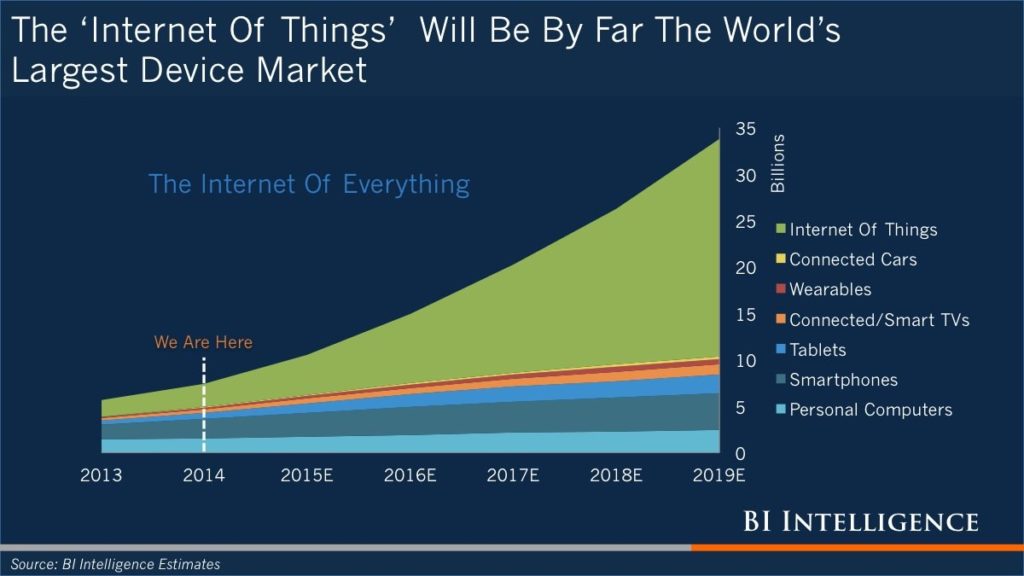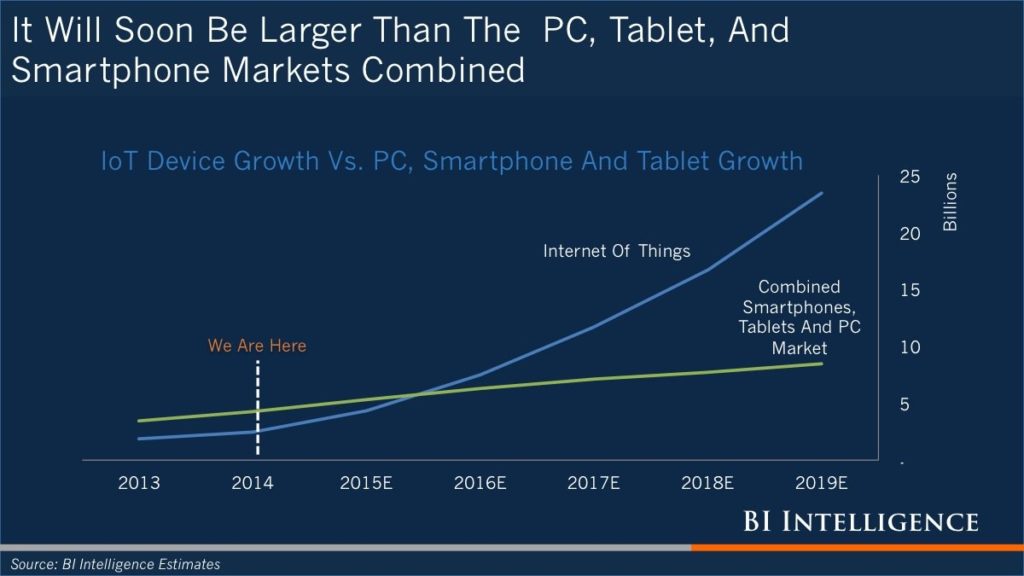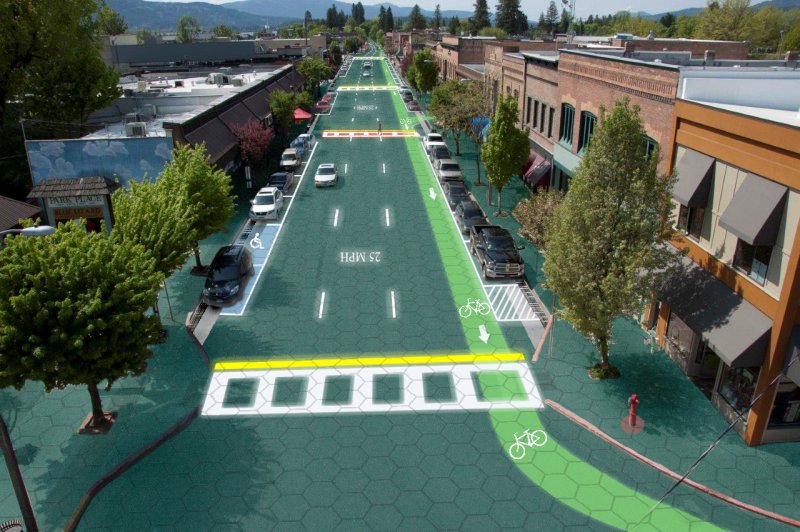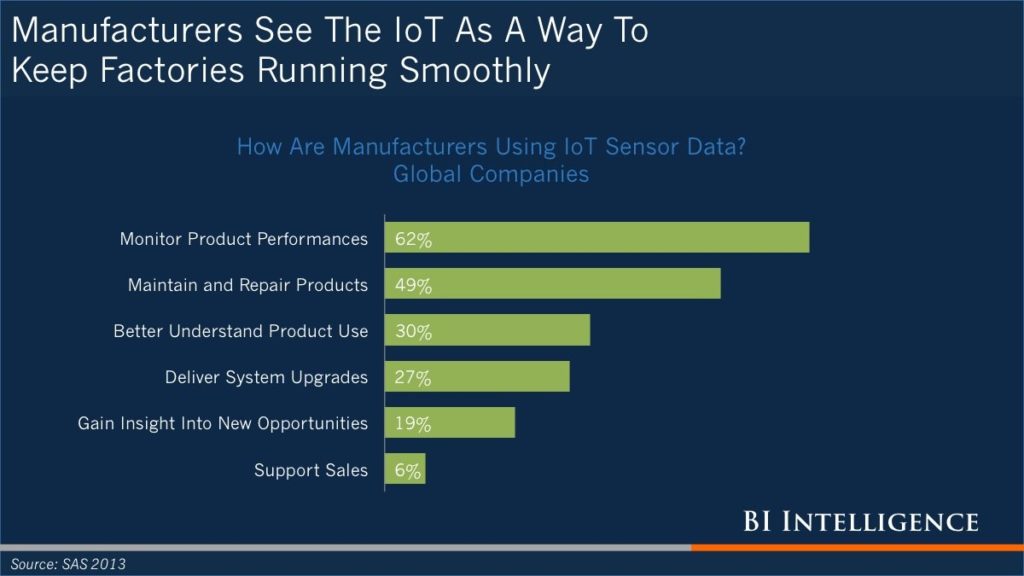Aware and connected
The Internet of Things (IoT) is a wide-ranging transformation of the way everyday objects and large-scale machines communicate and operate. All kinds of objects are becoming aware of real-time conditions, communicating those instantly via the Internet. And the number of aware-and-connected objects will skyrocket.
In 1984, the number of devices connected to the Internet was 1000. In 2012, that number reached 17,000,000,000. By 2020, Gartner estimates anywhere from 26,000,000,000 to 50,000,000,000 devices will connect to the Internet. That includes more than just computers and mobile devices.

New business opportunities
This will create an explosion of data, enabling a new kind of predictive business insight. Systems will assess priorities, weigh choices and make course-correcting decisions automatically. It will give birth to new demand. Retailers and manufacturers will undergo digital transformations and develop new business models. To some extent, every company will need to become a technology company.

Imagine
Take electric cars as an example. They’re anticipated to become commonplace, so imagine the future highways, governed by sophisticated technologies that communicate with cars, road infrastructure and GPS systems. Surfaces are replaced with advanced solar panels that generate clean and renewable energy and wirelessly charge electric cars as they are driving or are parked. The panels also contain LED lighting as well as heating elements, keeping roadways free of snow and ice. There wouldn’t be any salt corroding your car or wasting tax money on snow removal. Lanes wouldn’t need to be repainted, just reprogrammed. A schoolyard could easily be transformed from a basketball court to a playground for children by the push of a button.

Pays for itself
A company that didn’t just imagine this is Solar Roadways. The IoT takes a huge leap into the future with their innovative solution: a super strong tempered glass protects the solar panels’ circuit boards, microprocessors and colored lights, which can create any type of graphics. This modular paving system could produce more clean and renewable energy than a country uses as a whole. It has been estimated that if all the roads in North America were converted to Solar Roadways, the country would generate three times as much energy as it currently uses. The mutual induction technology will allow for charging while driving.

Since the panels are pressure sensitive, they know when, for instance, trees have fallen on the road or if an animal is crossing, and could instantly display a warning sign ahead of the potential safety hazard. Cable corridors that run concurrently with the roadways themselves houses power lines, fiber optics, data lines and high speed Internet. It replaces the need for telephone poles and hanging wires. Another channel captures and filters storm water and melted snow, moving them either to a treatment facility or treating them onsite, greatly decreasing the amount of pollution that enters our soil and oceans.
Putting our roads to work seemed like a good idea to the 165 countries that have donated to make this dream come true. In his TEDx Talk, Scott Brusaw, the co-founder of Solar Roadways, shares his vision of how our dependency on oil could come to an abrupt end.
Businesses as networks
And while highways evolve, a combination of the connected vehicle and the IoT will enable vehicles to broadcast and receive information on things like traffic, speed and weather. As a result, cars will be able to travel closer together and react more quickly to variables around them. By 2020, 100 million new cars will have their own Internet connections. Connected things will generate entirely new data to be analyzed for data-driven decisions, operations and insights. Businesses – not consumers – will be the biggest adopters of the IoT and they will invest a quarter trillion dollars in it by the decade’s end. Business Insider UK shares their foresights in this interesting slide deck.

Among many businesses, we will continue to see new ecosystems form around:
- Digital insurance
- Payment systems
- Healthcare
- Transportation
The Industrial Internet of Things (IIoT) is the part of the IoT that focuses on how smart machines, networked sensors and sensor analytics can help improve business-to-business initiatives across a wide variety of industries. By being always available and massively scalable, the cloud is exceptionally positioned to help businesses operate as networks.
The driving philosophy is that machines are better than humans at accurately, consistently capturing and communicating data that can be analyzed to pick up on inefficiencies and problems sooner. Especially in manufacturing, IIoT holds great potential for quality control, sustainable practices and overall supply chain traceability and efficiency. And when we step into the next era of our digital evolution, the wise words of Scott Brusaw are good to keep in mind:
“What better way of rebuilding the world economy than making something to also help the environment?”



























